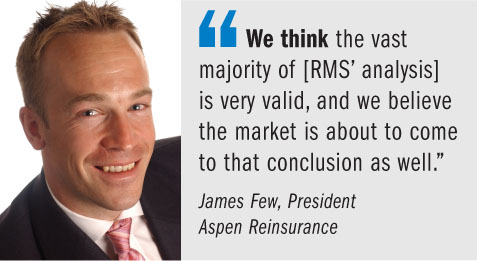Those who were anticipating rates to harden due to substantial updates to Risk Management Solutions' (RMS) U.S. hurricane model say the impact has—so far—turned out to be less than expected.
 RMS Version 11.0 “wasn't the driving factor that many people thought it would be when it came to renewals in January 2012,” says Insurance Information Institute President Robert Hartwig.
RMS Version 11.0 “wasn't the driving factor that many people thought it would be when it came to renewals in January 2012,” says Insurance Information Institute President Robert Hartwig.
The updates to the cat model, which were based on analysis of billions of dollars in claims and reams of other data, increased wind-related loss estimates for noncoastal areas and even inland states.
Recommended For You
Want to continue reading?
Become a Free PropertyCasualty360 Digital Reader
Your access to unlimited PropertyCasualty360 content isn’t changing.
Once you are an ALM digital member, you’ll receive:
- Breaking insurance news and analysis, on-site and via our newsletters and custom alerts
- Weekly Insurance Speak podcast featuring exclusive interviews with industry leaders
- Educational webcasts, white papers, and ebooks from industry thought leaders
- Critical converage of the employee benefits and financial advisory markets on our other ALM sites, BenefitsPRO and ThinkAdvisor
Already have an account? Sign In Now
© 2025 ALM Global, LLC, All Rights Reserved. Request academic re-use from www.copyright.com. All other uses, submit a request to [email protected]. For more information visit Asset & Logo Licensing.








